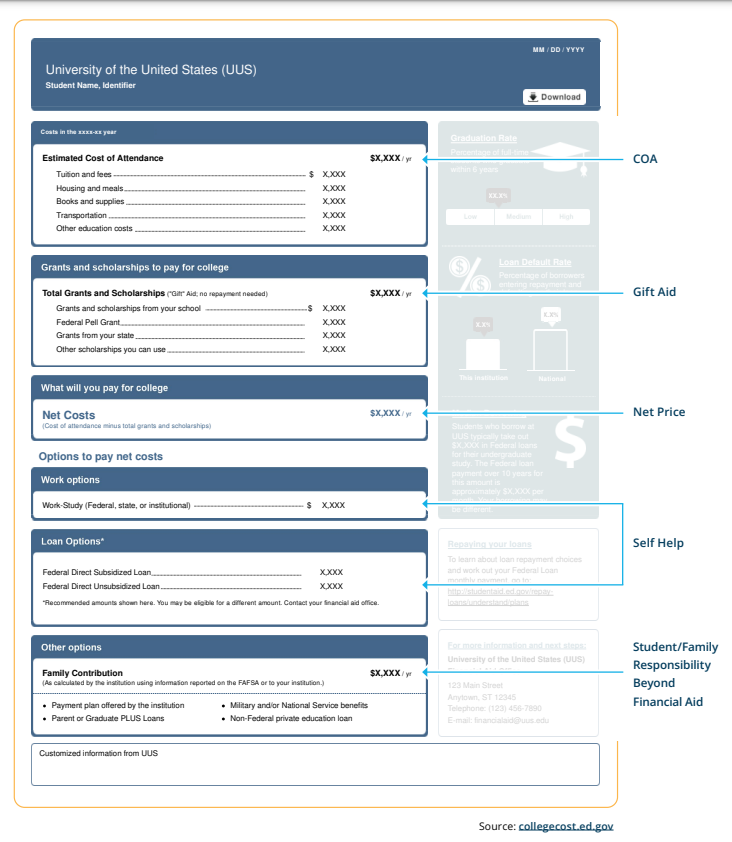Use this step-by-step approach for comparing college financial aid offers

Deciding where to attend college? It’s important to follow your heart — but mostly likely you’re going to have to do some math as well. So, let’s talk financial aid offers.
You will receive a financial aid offer after you have been accepted to a college and submitted the required financial aid form(s). This is the official offer of financial aid from the college. It is for one year only: You will need to fill out financial aid applications each year, and your offer may change from year to year.
Financial aid offers look different at each college. While some colleges use the Federal Shopping Sheet (pictured below), many use their own style. Some colleges include their estimated Cost of Attendance right on their financial aid offer, while others do not. Some financial aid offers will list the amount of free money (grants and scholarships) separately from loan options (Federal Direct Loans). It is important for you and your family to understand the key pieces of a financial aid offer so that you can compare them accurately.
1. Find the total Cost of Attendance. If the Cost of Attendance is not on the offer, check the financial aid office’s website or call them directly. Remember the total Cost of Attendance often is more than tuition and room and board – indirect costs like books, supplies, and transportation are included in this number.
2. Note the scholarship and grant money first. Remember, this is money that you do not need to pay back when you graduate from college. Just be sure you understand any requirements for receiving these funds, such as your college GPA.
3. Review the loans you were offered. If you will need to borrow, accept the loans with the best rates first. Remember, subsidized loans are better than unsubsidized loans because the government pays the interest while you’re in school.
4. Find the net price. Subtract the grants and scholarships from the Cost of Attendance. This is your net price, or how much money you and/or your family will need to pay from income, savings, or loans.
5. Compare the net price for each school on your list. What is your out-of-pocket expense at each school? Which option is most affordable?
Need help comparing? Make an appointment with our education and career pathways team.
